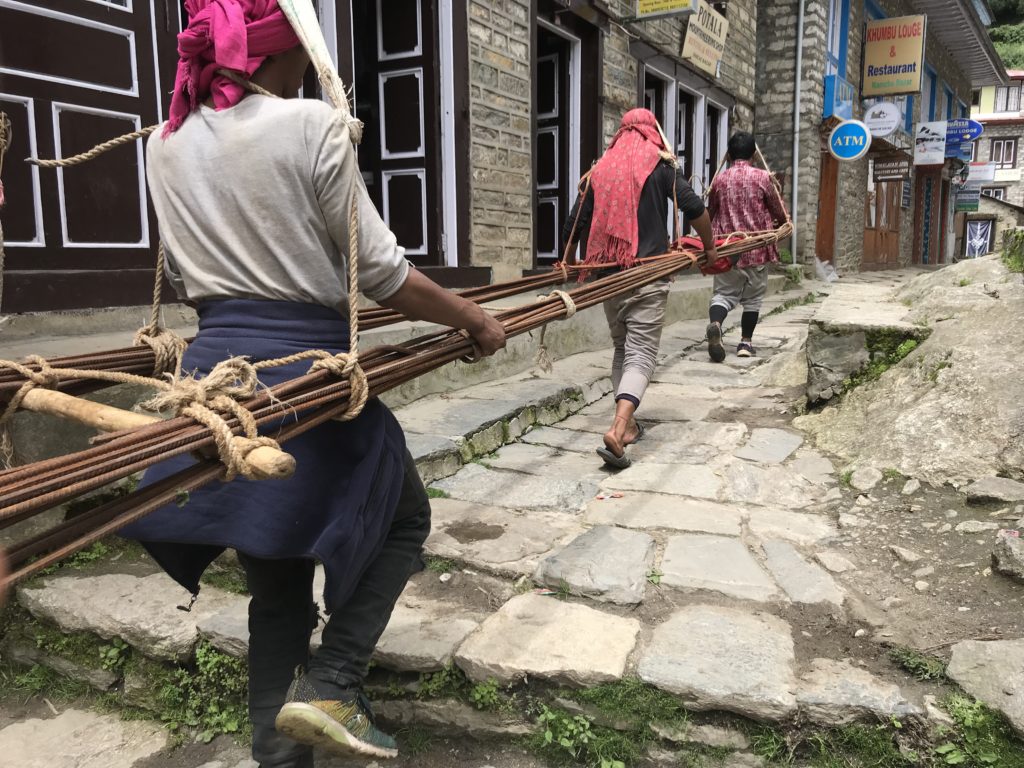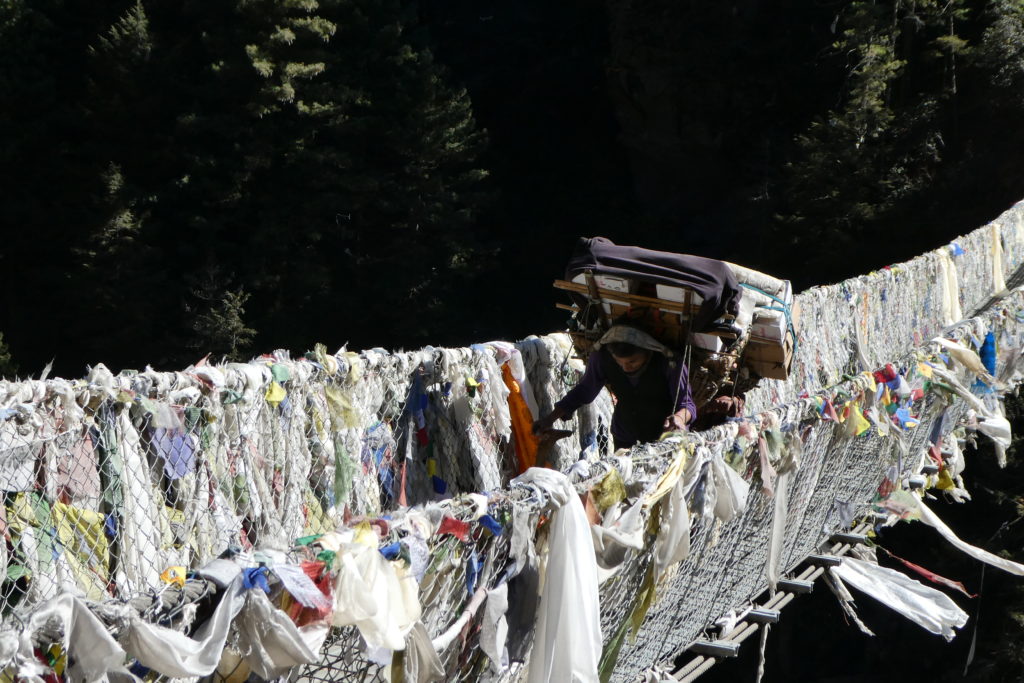Living in the valleys of Khumbu means, among many other things, that everything is done on foot. Here there are no roads or vehicles of any kind.
On foot they go to school, to see family, to the market, to the health centre (where there is), on foot they carry from place to place any load, whether light or heavy, or garbage are collected (where they do), and thus a long etcetera. There is an exception to doing so on foot, the helicopter, but affordable for very few people in these valleys.
It is worth mentioning that for a few years, now, most heavy construction materials are carried up with helicopters to Syangboche, just above Namche, and from there, then yes, on foot to where they will be used.

Carrying construction materials in Namche 
Carrying loads up to Namche
When we do a trek or a similar activity that is done on foot, we do it occasionally and for pleasure. Have to do it always on foot, with sun, rain or cold, be young or old, it’s another thing.
These days, going up to the village of Namche, from where I will develop this project, walking alone because I was alone and because I found no one almost on the way, I had time to think about this aspect of the Sherpa and not Sherpa people’s life who live in these valleys.
And then I was thinking about the hardness of their life and the simplicity with which they have to live. The simple thing to buy something as we do it, at the store, at the mall or by Internet, which allows us to have everything with a click, depending on our possibilities, and often things that, if we think on it, we would realise that we don’t need them to nothing. This so simple things, here where I am now, cannot be done.
Even so, here in Namche, being the centre of the mountain tourism activity in the Everest area, there are many more options to buy things and find services that other villages in these valleys don’t have.
This leads me to explain that here, because tourism has two very marked seasons, spring and fall, now in summer, and I suppose that in winter it will be the same, these options almost disappear because most shops and hotels and lodges, are closed.
Now, here there are practically only local people, who make a life totally different from that during tourist seasons. They take the opportunity to rest, make repairs and improvements to their homes, take care of the garden if they have it, make family life, join for parties, that is to say, what they cannot do during the peak season. It seems to me that this way of life is a bit like the life in villages where tourism has no influence. I’ll go see it when I go, and I’ll explain it to you.
My friend, Pasang, who is accompanying me to go through these valleys, always tells me that to know how the life of the Sherpa people is, it is necessary to leave Namche. That here it is very westernized, and he is right, but these days I am discovering a different Namche than I knew other times and, the truth, I was very surprised.
Returning to the initial thread of the non-existence of roads and vehicles, it comes to my mind the discussions in this country about whether or not to build roads to access to the remote places. Discussions that are neither alien to our country.
Recently, the government of Nepal is building roads in difficult areas and there are already many villages that can be reached by vehicles, motorcycles, cars and small buses. This means that in some well-known areas for trekking, they begin to change the routes of the traditional trekking because they no longer make sense to do them by road sections. But most people are happy because they no longer must walk three days to go to the nearest big town. And then three more days back.
What about Khumbu? Well, in the lower part, they are already opening a road that sooner or later it seems will reach Lukla, which is the starting point of treks and expeditions to the Everest area, and where there is now no other means of transport than by plane. Really, very small planes. Or on foot, of course.
Above, it is not so clear because the Sagarmatha National Park (Everest) has a special protection and some sites with an impossible terrain.
This means that the high places of the Khumbu are doomed for life to do everything on foot? Well, I do not know but for now it seems like yes.
So, contradictions of life, all on foot, often with the load on the back, but talking by the mobile, connected to the world!